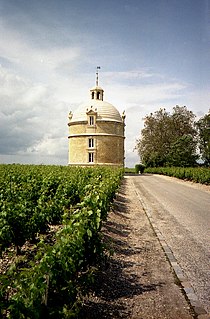
The wine region within the historical province of Champagne in the northeast of France is best known for the production of champagne, the sparkling white wine that bears the region's name. EU law and the laws of most countries reserve the term "champagne" exclusively for wines that come from this region located about 160 kilometres (100 miles) east of Paris. The viticultural boundaries of Champagne are legally defined and split into five wine-producing districts within the historical province: Aube, Côte des Blancs, Côte de Sézanne, Montagne de Reims, and Vallée de la Marne. The city of Reims and the town of Épernay are the commercial centers of the area. Reims is famous for its cathedral, the venue of the coronation of the French kings and a UNESCO World Heritage Site.

Dom Pierre Pérignon, was a French Benedictine monk who made important contributions to the production and quality of Champagne wine in an era when the region's wines were predominantly still red. Popular myths frequently, but erroneously, credit him with the invention of sparkling Champagne, which did not become the dominant style of Champagne until the mid-19th century.

Mosel is one of 13 German wine regions (Weinbaugebiete) for quality wines , and takes its name from the Mosel River. Before 1 August 2007 the region was called Mosel-Saar-Ruwer, but changed to a name that was considered more consumer-friendly. The wine region is Germany's third largest in terms of production but some consider it the leading region in terms of international prestige.

Viticulture or winegrowing is the cultivation and harvesting of grapes. It is a branch of the science of horticulture. While the native territory of Vitis vinifera, the common grape vine, ranges from Western Europe to the Persian shores of the Caspian Sea, the vine has demonstrated high levels of adaptability to new environments, hence viticulture can be found on every continent except Antarctica.

Graves is an important subregion of the Bordeaux wine region. Graves is situated on the left bank of the Garonne River, in the upstream part of the region, southeast of the city Bordeaux and stretches over 50 kilometres (31 mi). Graves is the only Bordeaux subregion which is famed for all three of Bordeaux' three main wine types—reds, dry whites and sweet wines—although red wines dominate the total production. Graves AOC is also the name of one Appellation d'origine contrôlée (AOC) which covers most, but not all of the Graves subregion.

Condrieu is a French wine-growing Appellation d'Origine Contrôlée (AOC) located in the northern Rhône, near Vienne and to the south of the Côte-Rôtie AOC. The vineyards are situated in the seven communes of Limony, Chavanay, Malleval, Saint-Michel-sur-Rhône, Saint-Pierre-de Boeuf, Vérin, and Condrieu. These communes are in the French departments of Ardèche, Rhône and Loire on the steep slopes of the foothills of the Massif Central on the right bank of the Rhône. The four southernmost communes can also produce wine under the Saint-Joseph AOC. The wines made in this AOC are exclusively white, from the Viognier grape, which may have originated in the region. The smaller AOC of Château-Grillet is enclaved within Condrieu and produces wines that are also 100% Viognier. The Condrieu AOC was officially created in 1940.

Bordeaux wine is produced in the Bordeaux region of southwest France, around the city of Bordeaux, on the Garonne River. To the north of the city the Dordogne River joins the Garonne forming the broad estuary called the Gironde; the Gironde department, with a total vineyard area of 110,800 hectares, is the largest wine growing area in France.

Bodegas Vega Sicilia is a Spanish winery located in the Ribera del Duero Denominación de Origen in the Province of Valladolid, Castile and León. The winery was founded in 1864 by Don Eloy Lecanda y Chaves, who planted various grapes from the Bordeaux wine region of France, including Cabernet Sauvignon and Merlot, which are still being used in the wines today.
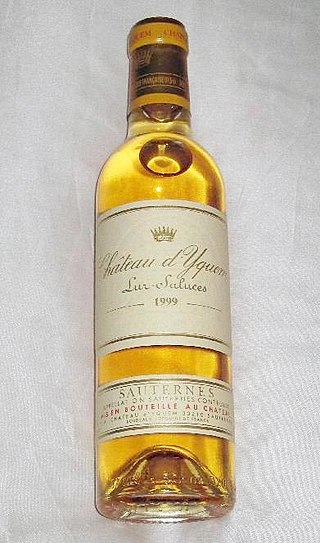
Sauternes is a French sweet wine from the region of the same name in the Graves section in Bordeaux. Sauternes wine is made from Sémillon, sauvignon blanc, and muscadelle grapes that have been affected by Botrytis cinerea, also known as noble rot. This causes the grapes to become partially raisined, resulting in concentrated and distinctively flavored wines. Due to its climate, Sauternes is one of the few wine regions where infection with noble rot is a frequent occurrence. Even so, production is a hit-or-miss proposition, with widely varying harvests from vintage to vintage. Wines from Sauternes, especially the Premier Cru Supérieur estate Château d'Yquem, can be very expensive, largely due to the very high cost of production. Barsac lies within Sauternes and is entitled to use either name. Somewhat similar but less expensive and typically less-distinguished wines are produced in the neighboring regions of Monbazillac, Cérons, Loupiac and Cadillac. In the United States, there is a semi-generic label for sweet white dessert wines known as sauterne without the "s" at the end and uncapitalized.
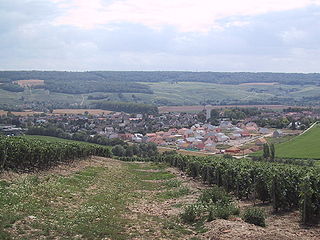
The Champagne Riots of 1910 and 1911 resulted from a series of problems faced by grape growers in the Champagne area of France. These included four years of disastrous crop losses, the infestation of the phylloxera louse, low income and the belief that wine merchants were using grapes from outside the Champagne region. The precipitating event may have been the announcement in 1908 by the French government that it would delimit by decree the exact geographic area that would be granted economic advantage and protection by being awarded the Champagne appellation. This early development of Appellation d'Origine Contrôlée regulation benefitted the Marne and Aisne districts to the significant exclusion of the Aube district which included the town of Troyes—the historic capital of the Champagne region.
The police des vins were a set of codes and business practices set up in the 13th and 14th century that govern the wine trade within the region of Bordeaux and the use of its port by neighboring areas. The codes were aimed at giving Bordeaux wine a position of dominance over the region and in the English wine market.
Château Desmirail is a winery in the Margaux appellation of the Bordeaux wine region of France. It was classified as one of fourteen Troisièmes Crus in the historic Bordeaux Wine Official Classification of 1855.

The wine regions of Bordeaux are a large number of wine growing areas, differing widely in size and sometimes overlapping, which lie within the overarching wine region of Bordeaux, centred on the city of Bordeaux and covering the whole area of the Gironde department of Aquitaine.
Pierre de Rauzan, also known as Pierre de Mesures de Rauzan, was a Bordeaux wine merchant. He served as estate manager of Château Latour. In the 1690s he began buying land in the Médoc near the village of Pauillac.

The history of Rioja wine reflects a long and varied winemaking tradition in the Spanish region of La Rioja, starting with the first Phoenician settlers in 11th century BC. As with many of Europe's best-known wine regions, the Ancient Romans founded many of the Rioja vineyards. Throughout the Middle Ages, pilgrims to the shrine of St. James at Santiago de Compostela passed through the region and carried back with them the reputation of wines from the area. The phylloxera epidemic of the late 19th century was a major catalyst in the expansion and modernization of the Rioja wine industry, with the devastation of the French wine industry both opening up the French wine market and bringing an influx of French investment into the region. Today, together with Sherry, Rioja is the most internationally recognized of all Spanish wines.

Lombardy wine is the Italian wine produced in the Lombardy region of north central Italy. The region is known particularly for its sparkling wines made in the Franciacorta and Oltrepò Pavese areas. Lombardy also produces still red, white and rosé wines made from a variety of local and international grapes, including Nebbiolo wines in the Valtellina region and Trebbiano di Lugana white wines produced with the Chiaretto style rosé along the shores of Lake Garda. The wine region currently has 22 denominazione di origine controllata (DOC), 5 denominazione di origine controllata e garantita (DOCG) and at least 13 indicazione geografica tipica (IGT) designations. The main cities of the region are Milan, Bergamo and Brescia. The region annually produces around 1.3 million hectolitres of wine, more than the regions of Friuli-Venezia Giulia, Marche, Trentino-Alto Adige/Südtirol and Umbria.
Henri Enjalbert was a French professor of geography at the University of Bordeaux. He was considered an eminent specialist in wine geology, whose expert opinion frequently overlapped into the fields of oenology, and wine and terroir history, within the Bordeaux region and beyond. Among other credits, he has been called "Bordeaux's most diligent geologist" and "the discoverer of Mas de Daumas Gassac. Among his contentions are that Albania, the Ionian Islands of Greece, and southern Dalmatia in present-day Bosnia and Herzegovina may have been the last European refuge of the grape vine after the Ice Age.
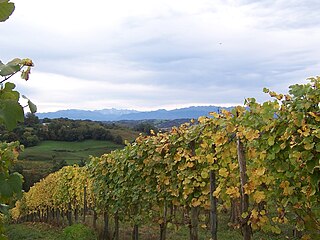
South West France, or in French Sud-Ouest, is a wine region in France covering several wine-producing areas situated respectively inland from, and south of, the wine region of Bordeaux. These areas, which have a total of 16,000 hectares of vineyards, consist of several discontinuous wine "islands" throughout the Aquitaine region, and more or less to the west of the Midi-Pyrénées region.

Cru is a wine term used to indicate a high-quality vineyard or group of vineyards. It is a French word which was originally used to refer to both a region and anything grown in it, but is now mostly used to refer to both a vineyard and its wines. The term is often used within classifications of French wine. By implication, a wine that displays the name of its cru on its wine label is supposed to exhibit the typical characteristics of this vineyard or group of vineyards. The terms premier cru and grand cru designate levels of presumed quality that are variously defined in different wine regions.
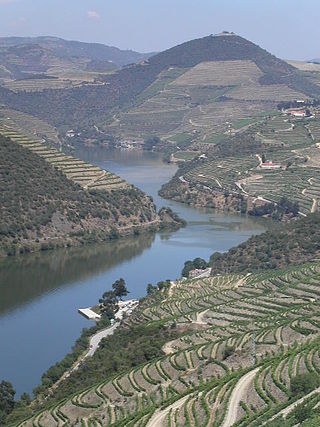
The Quinta classification of Port vineyards in the Douro is a system that grades the terroir and quality potential of vineyards in the Douro wine region to produce grapes suitable for the production of Port wine. In Portuguese, a quinta is a wine producing estate, which can be a winery or a vineyard. While other wine classification systems may classify the winery, the Douro quinta classification is based upon the physical characteristics of the vineyard. The classification system is run by the Instituto dos Vinhos do Douro e Porto (IVDP) and shares some similarities to the classification of Champagne vineyards in that one of the purposes of the system is to ensuring that vineyards producing grapes with the highest quality potential receive a high price. A secondary function of the quinta classification is the establishment of permitted yields for production. Quintas with a higher classification are permitted to harvest more grapes than a vineyard that received a lower classification.
